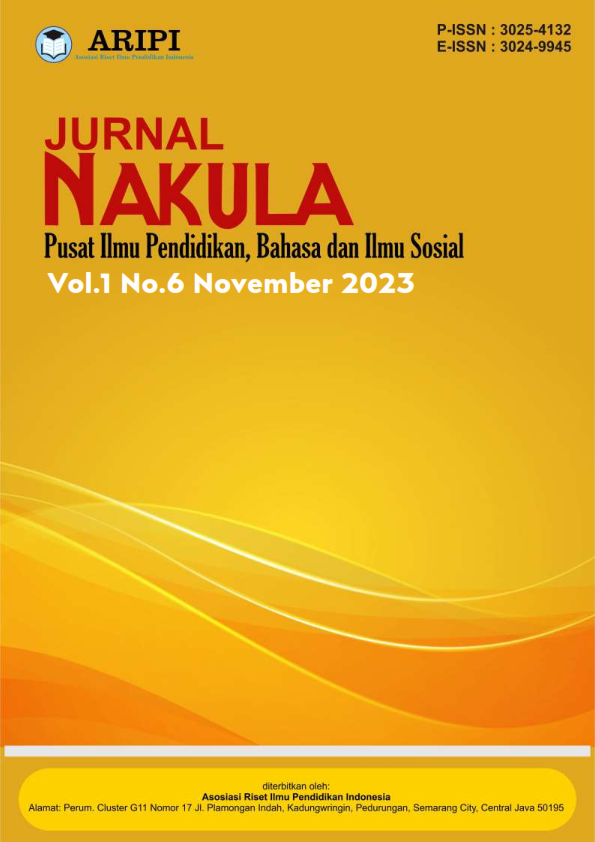Penerapan Dialektika Guru dan Murid dalam Perspektif Hegel untuk Meningkatkan Proses Belajar Mengajar Siswa Kelas 2 MTs Nur Muhammad Klakah Lumajang Tahun Ajaran 2021-2022
DOI:
https://doi.org/10.61132/nakula.v1i6.1665Keywords:
Critical Thinking, Hegel's Dialectics, Learning MethodsAbstract
This study discusses the application of the concept of dialectics in Hegel’s perspective to improve the teaching and learning process of grade 2 students of MTs Nur Muhammad Klakah Lumajang in the 2021-2022 academic year. The concept of Hegel’s dialectics, which consists of thesis, antithesis, and synthesis, is the basis for building dynamic interactions between teachers and students. The application of this concept is carried out through discussion methods, project-based learning, and problem-based learning to encourage critical thinking and the development of deeper understanding. This study uses a qualitative approach with a case study method to observe the effectiveness of the implementation of the dialectics concept in learning. Data were collected through direct observation in class, interviews with teachers and students, and analysis of learning documents. Data analysis techniques used include data reduction, data presentation, and drawing conclusions. The results of the study show that the application of dialectics in learning can increase student engagement, strengthen analytical thinking skills, and create a more interactive learning atmosphere. Thus, the concept of Hegel’s dialectics can be an effective strategy in improving the quality of education and forming critical and reflective student characters.
Downloads
References
Arikunto, S. (2010). Prosedur penelitian: Suatu pendekatan praktik. Rineka Cipta.
Barrows, H. S., & Tamblyn, R. M. (1980). Problem-based learning: An approach to medical education. Springer.
Brookfield, S. D. (2017). Becoming a critically reflective teacher (2nd ed.). Jossey-Bass.
Dewey, J. (1938). Experience and education. Macmillan.
Freire, P. (2005). Pedagogy of the oppressed (30th Anniversary ed.). Continuum.
Huda, M., Fawaid, A., & Slamet, S. (2023). Implementasi teori belajar behavioristik dalam proses pembelajaran. Pendekar: Jurnal Pendidikan Berkarakter, 1(4), 64-72.
Irwansyah, I., Harahap, H. S., & Rabbani, R. (2022). Hubungan guru dan murid menurut KH. Hasyim Asy’ari dalam kitab Âdâb Al-‘âlim Wa Al-Mutaallim dan implementasinya. Tajribiyah: Jurnal Pendidikan Agama Islam, 1(2), 93-99.
Miles, M. B., Huberman, A. M., & Saldana, J. (2014). Qualitative data analysis: A methods sourcebook (3rd ed.). SAGE Publications.
Mulyangga, D., & Yuliati, Y. (2022). Dialektika Hegelian dan relevansinya dengan metode diskusi dalam pembelajaran sejarah. Widya Winayata: Jurnal Pendidikan Sejarah, 10(2), 1-13.
Pinkard, T. (2000). Hegel: A biography. Cambridge University Press.
Rohani, R., Fadillah, F. S., Ernita, M., & Zatrahadi, M. F. (2022). Metode analisis dialektika Hegel untuk meningkatkan berfikir kritis dan kreatif siswa dalam pembelajaran ilmu pendidikan sosial. TSAQIFA NUSANTARA: Jurnal Pembelajaran dan Isu-Isu Sosial, 1(01), 29-50.
Siemens, G. (2005). Connectivism: A learning theory for the digital age. International Journal of Instructional Technology and Distance Learning, 2(1), 3-10.
Slamet, S. (2022). Peran kepala sekolah dalam membangun citra publik pada era 5.0 di Kabupaten Banyuwangi. DIAJAR: Jurnal Pendidikan dan Pembelajaran, 1(3), 268-273.
Sugiyono. (2019). Metode penelitian kuantitatif, kualitatif, dan R&D. Alfabeta.
Vygotsky, L. S. (1978). Mind in society: The development of higher psychological processes. Harvard University Press.
Wuju, W., & Putra, M. T. F. (2020). Hubungan antara guru dan siswa dalam meningkatkan proses belajar mengajar siswa kelas XII-IPS III SMA Negeri 9 Samarinda tahun pelajaran 2018/2019. Cendikia, 4(2), 11-22.
Downloads
Published
How to Cite
Issue
Section
License
Copyright (c) 2023 Jurnal Nakula : Pusat Ilmu Pendidikan, Bahasa dan Ilmu Sosial

This work is licensed under a Creative Commons Attribution-ShareAlike 4.0 International License.





